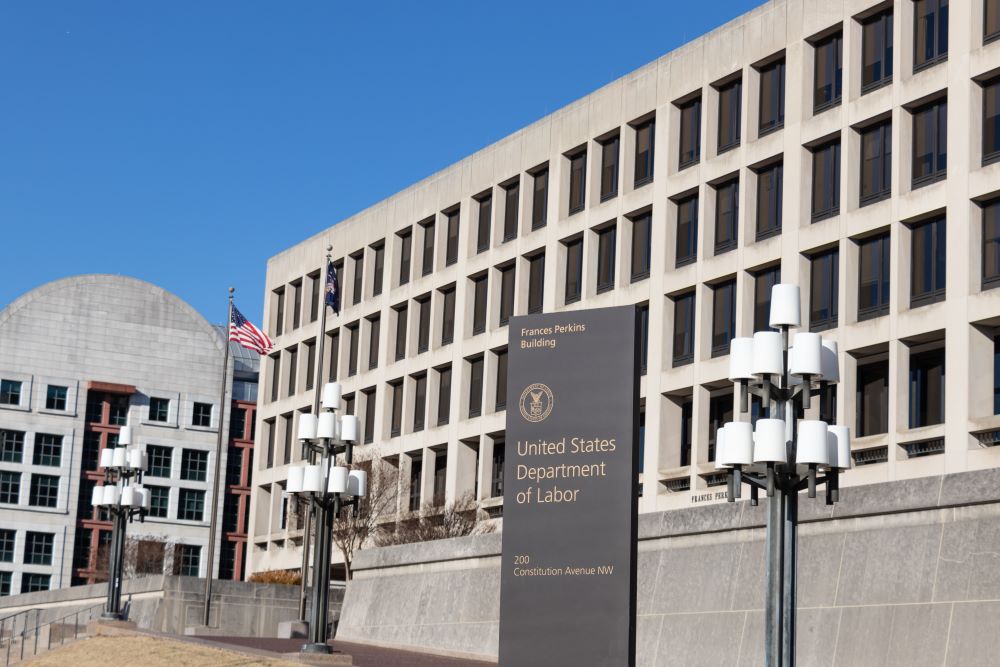
May 3, 2024

The Department of Labor (DOL) has announced a significant update to The Fair Labor Standards Act (FLSA), set to expand overtime eligibility for salaried workers in the United States. Effective from July 1, 2024, this update increases the salary thresholds for overtime eligibility and refines the classification criteria for executive, administrative, and professional (EAP) employees.
This development marks one of the most substantial shifts in federal labor policy in recent years. With this rule change expected to grant overtime protections to approximately 4.3 million additional workers, its impact is expected to be felt across industries, especially within the hospitality, healthcare, finance, manufacturing, and retail environments. To help clients, prospects, and others, Wilson Lewis has provided a summary of the key details below.
The Fair Labor Standards Act (FLSA), established in 1938, is a U.S. labor law that sets national standards for wages and working conditions. It covers areas such as minimum wage, overtime pay, recordkeeping, and regulations concerning the employment of minors in both the private sector and government employment. Under the FLSA, employees classified as non-exempt must receive overtime pay for hours worked in excess of 40 per workweek.
The FLSA is administered by the Wage and Hour Division of the Department of Labor (DOL). The DOL is tasked with enforcing federal labor laws, including the FLSA, ensuring that employers comply with the various protections afforded to workers. The act is meant to promote fair working conditions and wages, with a minimum standard of living for employees covered under its provisions.
As noted, recent adjustments to the FLSA have overhauled the salary thresholds for overtime eligibility. Effective July 1, 2024, the threshold for exempting certain salaried workers from overtime pay will rise from $35,568 to $43,888. Employees earning below $43,888 will be eligible for overtime pay at 1.5 times their regular rate for hours worked beyond 40 in a week. The threshold will further increase to $58,656 on January 1, 2025.
Moreover, the rule introduces automatic updates every three years, starting July 1, 2027, to align salary thresholds with inflation and wage increases. The rule states that these updates will use a methodology setting the standard salary level at the 35th percentile of weekly earnings for full-time salaried workers in the lowest-wage Census region.
For hourly employees, overtime compensation criteria remain unchanged: they receive 1.5 times their regular rate of pay for hours worked beyond 40 in a week.
The rule also outlines eligibility criteria for employees exempt from minimum wage and overtime protections under the bona fide executive, administrative, and professional (EAP) exemption:
The new rule clarifies the tests used to determine whether an employee is exempt from overtime and minimum wage protections. The goal is to ensure that lower-paid workers receive overtime compensation and that those in higher-level professional roles can be exempt based on their compensation and responsibilities.
Consider a retail store manager earning $40,000 annually who works 50 hours a week. Under the current threshold, this manager would not qualify for overtime. However, with the new rule effective from July 2024, the manager would be entitled to overtime pay for the 10 hours worked beyond the standard workweek.
This scenario presents several business implications, including increased labor costs, operational changes, and budget adjustments. This may mean reevaluating staffing levels, schedules, or workload distribution. Additionally, businesses must ensure compliance with the new overtime rule, which may involve updating payroll systems and providing training on overtime regulations.
The announcement of the new overtime rule has elicited various reactions from various stakeholders. Labor advocates and workers’ rights groups have hailed the rule as a significant victory, emphasizing that it will provide much-needed financial relief to millions of lower-paid salaried employees who routinely work long hours without adequate compensation. They argue that the rule not only ensures fair pay for extra work but also promotes a better work-life balance for affected employees.
On the other hand, many business organizations have raised concerns about the implications of the new thresholds. Groups such as the National Retail Federation, the National Restaurant Association, and the National Association of Manufacturers have voiced concerns that the increased salary limits for overtime eligibility will lead to higher operational costs for businesses. They caution that this could result in reduced flexibility in staffing and hours, potentially forcing businesses to cut jobs or reduce hours to manage costs. These organizations also express concerns about the rigidity of the rule, suggesting it may limit the ability of businesses to respond to market and operational demands.
In defense of the rule, the White House asserts that the adjustments are necessary reflections of economic changes and are intended to ensure fair compensation for salaried employees. Acting Secretary of Labor, Julie Su, reinforced this stance by stating, “This rule will restore the promise to workers that if you work more than 40 hours in a week, you should be paid more for that time.”
Contact Us
The recently enacted changes will have a significant impact on businesses and how employees are compensated. It is important to consult with a qualified advisor to determine how you may be impacted. If you have questions about the information outlined above or need assistance with another tax or accounting issue, Wilson Lewis can help. For additional information call 770-476-1004 or click here to contact us. We look forward to speaking with you soon.